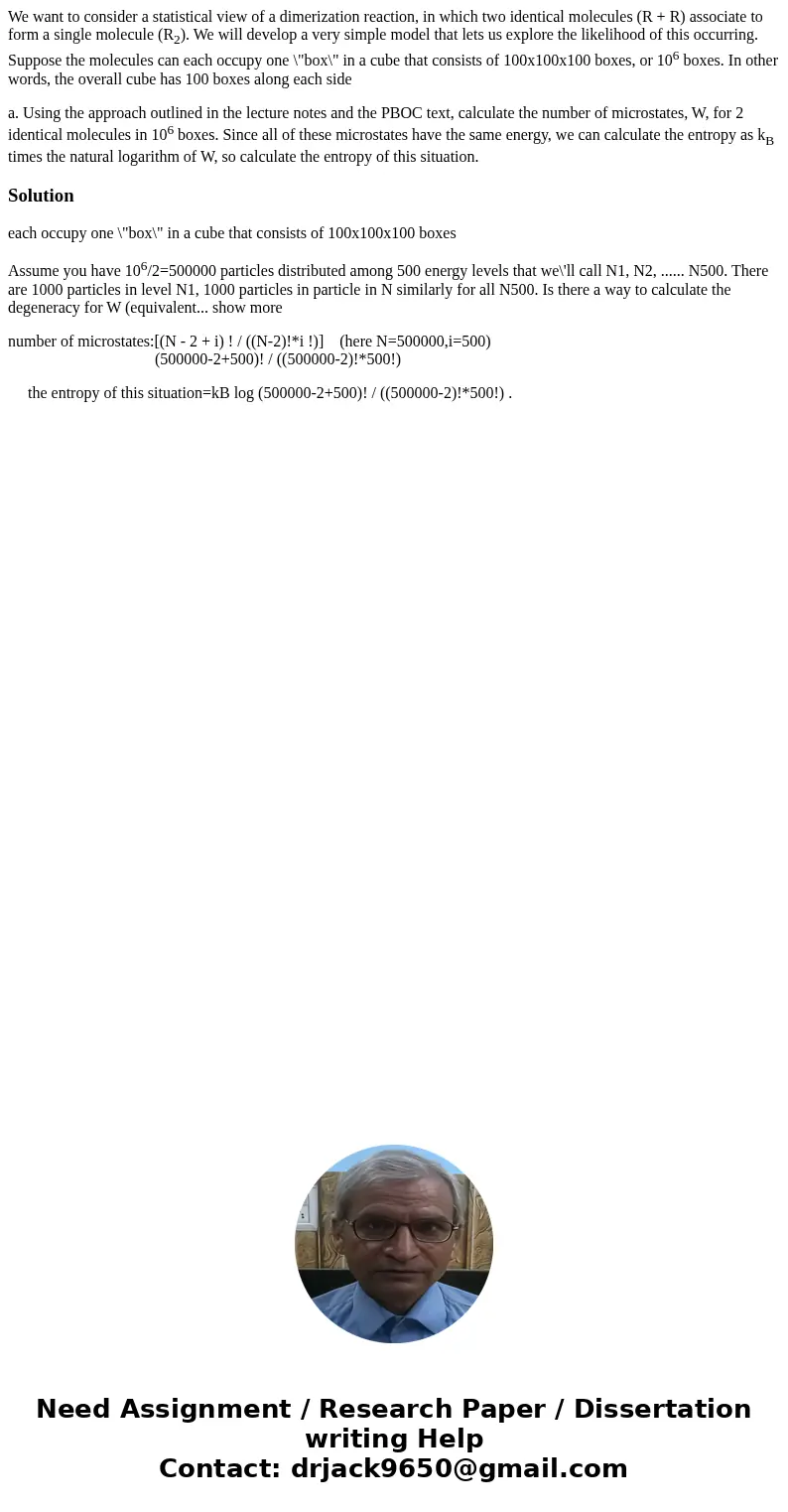We want to consider a statistical view of a dimerization rea
We want to consider a statistical view of a dimerization reaction, in which two identical molecules (R + R) associate to form a single molecule (R2). We will develop a very simple model that lets us explore the likelihood of this occurring. Suppose the molecules can each occupy one \"box\" in a cube that consists of 100x100x100 boxes, or 106 boxes. In other words, the overall cube has 100 boxes along each side
a. Using the approach outlined in the lecture notes and the PBOC text, calculate the number of microstates, W, for 2 identical molecules in 106 boxes. Since all of these microstates have the same energy, we can calculate the entropy as kB times the natural logarithm of W, so calculate the entropy of this situation.
Solution
each occupy one \"box\" in a cube that consists of 100x100x100 boxes
Assume you have 106/2=500000 particles distributed among 500 energy levels that we\'ll call N1, N2, ...... N500. There are 1000 particles in level N1, 1000 particles in particle in N similarly for all N500. Is there a way to calculate the degeneracy for W (equivalent... show more
number of microstates:[(N - 2 + i) ! / ((N-2)!*i !)] (here N=500000,i=500)
(500000-2+500)! / ((500000-2)!*500!)
the entropy of this situation=kB log (500000-2+500)! / ((500000-2)!*500!) .

 Homework Sourse
Homework Sourse